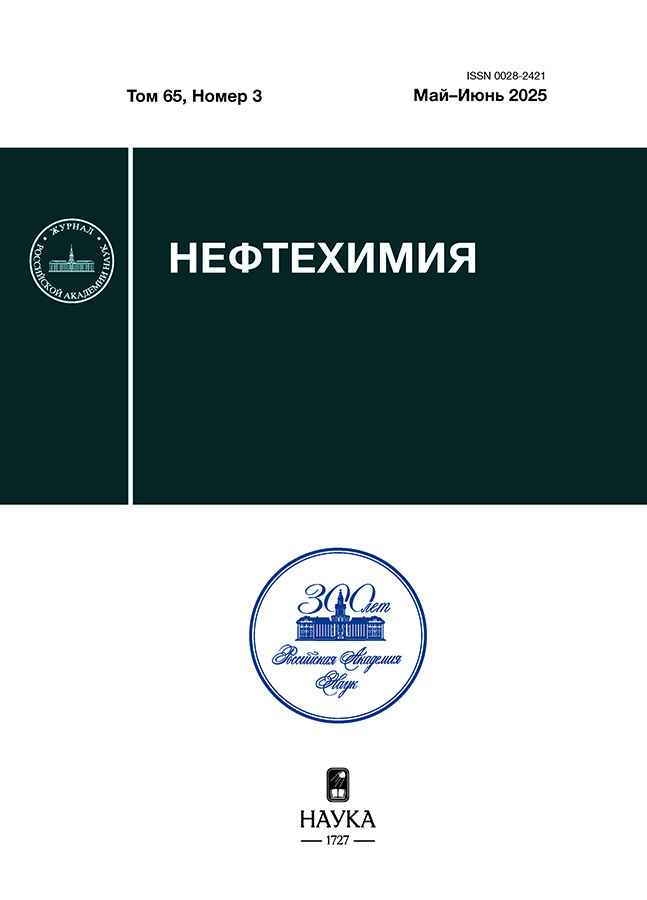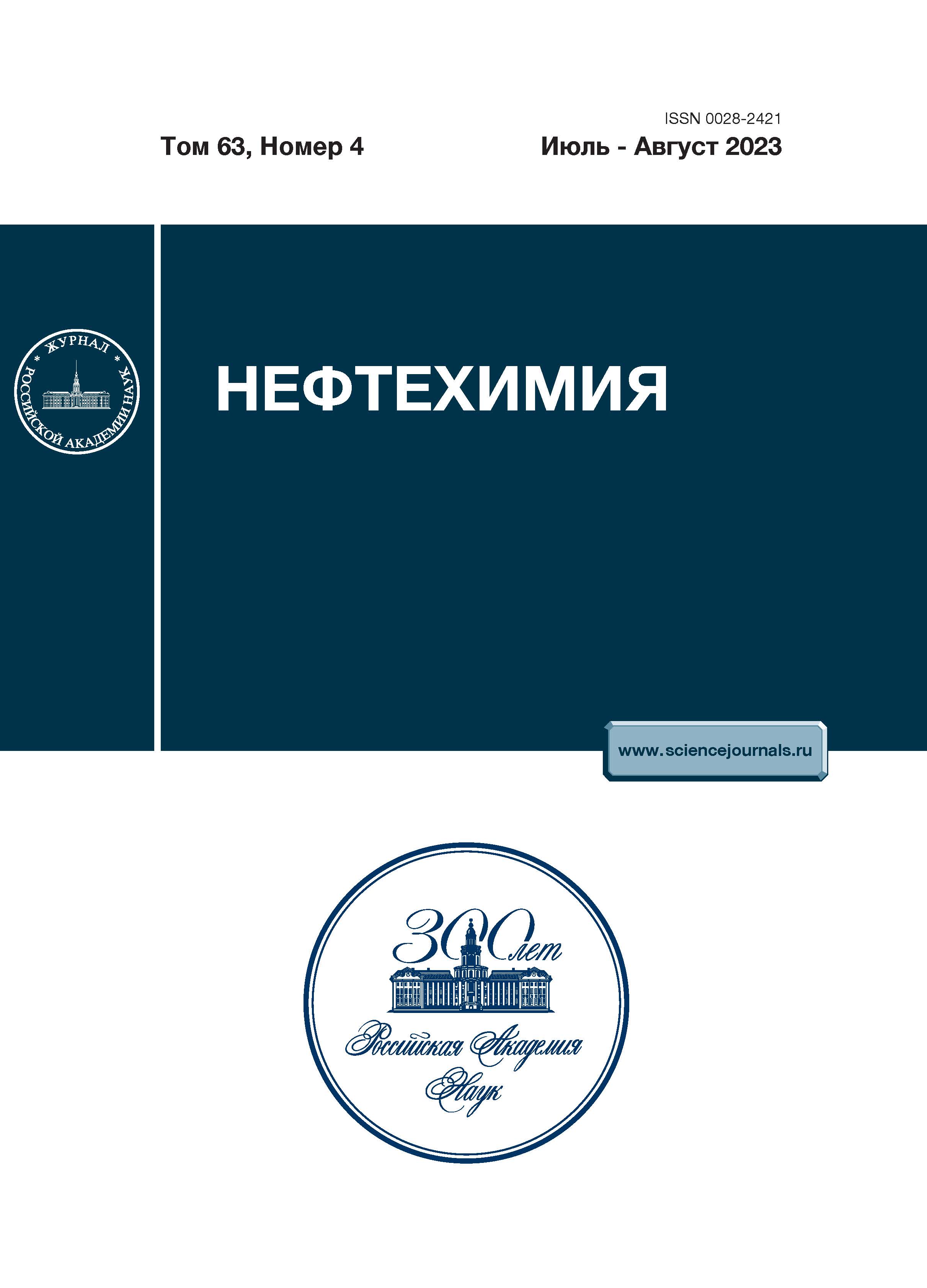Исследование реологических характеристик бурового раствора на водной основе в присутствии биополимеров, синтетического полимера и модифицированного природного полимера
- Авторы: Shaine M.L.1, Syed I.A.1, Muhammad A.K.1
-
Учреждения:
- NED University of Engineering & Technology
- Выпуск: Том 63, № 4 (2023)
- Страницы: 494-506
- Раздел: Статьи
- URL: https://transsyst.ru/0028-2421/article/view/655596
- DOI: https://doi.org/10.31857/S0028242123040044
- EDN: https://elibrary.ru/OJEPKV
- ID: 655596
Цитировать
Полный текст
Аннотация
Четыре различных полимера: биополимеры альгинат натрия и Pure-bore®, синтетический частично гидролизованный полиакриламид (PHPA) и модифицированная природная полианионная целлюлоза класса L (PAC-L) были использованы в качестве добавок для улучшения реологических характеристик буровых растворов на водной основе (WBDF). После добавления этих полимеров не наблюдалось значительных изменений плотности бурового раствора. Все системы ведут себя как жидкости, разжижающиеся при сдвиге (индекс текучести <1). Для всех образцов наблюдается снижение динамической вязкости с увеличением скорости сдвига. Раскручивание полимерных цепей, происходящее при высокой скорости сдвига, в итоге снижает вязкость этих систем. Образцы, состоящие из Pure-bore® и альгината натрия, демонстрируют желаемые рабочие значения реологических параметров, их применение позволяет свести к минимуму эксплуатационные проблемы, возникающие из-за плохой очистки скважины. Напротив, системы с использованием PHPA и PAC-L имели неблагоприятные реологические характеристики. Высокая молекулярная масса PHPA и гидратация PAC-L в присутствии хлорида калия снижают их эффективность.
Ключевые слова
Об авторах
Mohammadali Lalji Shaine
NED University of Engineering & Technology
Email: shaine@neduet.edu.pk
Imran Ali Syed
NED University of Engineering & Technology
Email: engrimran@neduet.edu.pk
75270, Karachi, Pakistan
Arqam Khan Muhammad
NED University of Engineering & Technology
Автор, ответственный за переписку.
Email: arqamkhan@neduet.edu.pk
75270, Karachi, Pakistan
Список литературы
- Lalji S.M., Ali S.I., Ahmed R., Hashmi S., Awan Z.U.H., Qazi S.W.A. Influence of graphene oxide on salt-polymer mud rheology and Pakistan shale swelling inhibition behavior // Arab. J. Geosci. 2022. V. 15. art. no. 612. https://doi.org/10.1007/s12517-022-09800-1
- Parizad A., Shanbazi K., Tanha A.A., Enhancement of polymeric water-based drilling fluid properties using nanoparticles // J. Petrol. Sci. Eng. 2018. V. 170. P. 813-828. https://doi.org/10.1016/j.petrol.2018.06.081
- Bayat A.E., Harati S., Kolivandi H., Evaluation of rheological and filtration properties of a polymeric water-based drilling mud in presence of nano additives at various temperatures // Colloids Surf. A, Physicochem. Eng. Asp. 2021. V. 627. P. 127128. https://doi.org/10.1016/j.colsurfa.2021.127128
- Elkatatny S. Enhancing the rheological properties of water-based drilling fluid using micronized starch // Arab J. Sci. Eng. 2019. V. 44. P. 5433-5442. https://doi.org/10.1007/s13369-019-03720-1
- Lalji S.M., Khan M.A., Haneef J., Ali S.I., Arain A.H., Shah S.S. Nanoparticles adapted drilling fluids for the swelling inhibition for the Northern region clay formation of Pakistan // Appl. Nanosci. 2021. https://doi.org/10.1007/s13204-021-01825-4
- Lalji S.M., Ali S.I., Haneef J., Quraishi R., Kapadia A., Jawaid H.. Changes in Pakistan crude oil properties contaminated by water-based drilling fluids with varying KCL concentrations // Chem. Pap. 2022. V. 76. P. 4189-4201. https://doi.org/10.1007/s11696-022-02154-8
- Prakash V., Sharma N., Bhattacharya M. Effect of silica nano particles on the rheological and HTHP filtration properties of environment friendly additive in water-based drilling fluid // J. Petrol. Explor. Prod. Technol. 2021. V. 11. P. 4253-4267. https://doi.org/10.1007/s13202-021-01305-z
- Aftab A., Ismail A.R., Ibupoto Z.H., Akeiber H., Malghani M.G.K. Nanoparticles based drilling muds a solution to drill elevated temperature wells: A review // Renew. Sust. Energt Rev. 2017. V. 76. P. 1301-1313. https://doi.org/10.1016/j.rser.2017.03.050
- Aftab A., Ali M., Sahito M.F., Mohanty U.S., Jha N.K., Akhondzadeh H., Azhar M.R., Ismail A.R., Keshavarz A., Iglauer S. Environmental friendliness and high performance of multifunctional Tween 80/ZnO-nanoparticles-added water-based drilling fluid: An experimental approach // ACS Sustainable Chem. Eng. 2020. V. 8. № 30. P. 11224-11243. https://doi.org/10.1021/acssuschemeng.0c02661
- Caenn R., Chillingar G.V. Drilling fluids: State of the art // J. Petrol. Sci. Eng. 1996. V. 14. P. 221-230. https://doi.org/10.1016/0920-4105(95)00051-8
- Li M.-C., Wu Q., Song K., Qing Y., Wu Y. Cellulose nanoparticles as modifiers for rheology and fluid loss in bentonite water-based fluids // ACS Appl. Mater. Interfaces. 2015. V. 7. № 8. P. 5006-5016. https://doi.org/10.1021/acsami.5b00498
- Jain R., Mahto T.K., Mahto V. Rheological investigations of water-based drilling fluid system developed using synthesized nanocomposite // Korea-Aust. Rheol. J. 2016. V. 28. P. 55-65. https://doi.org/10.1007/s13367-016-0006-7
- Ismail A.R., Mohd N.M.N.A., Basir N.F., Oseh J.O., Ismail I., Blkoor S.O. Improvement of rheological and filtration characteristics of water-based drilling fluids using naturally derived henna leaf and hibiscus leaf extracts // J. Petrol. Explor. Prod. Technol. 2020. V. 10. P. 3541-3556. https://doi.org/10.1007/s13202-020-01007-y
- Aftab A., Ismail A.R., Ibupoto Z.H. Enhancing the rheological properties and shale inhibition behavior of water-based mud using nanosilica, multi-walled carbon nanotube, and graphene nanoplatelet // Egypt J. Pet. 2017. V. 26. № 2. P. 291-299. https://doi.org/10.1016/j.ejpe.2016.05.004
- Elkatatny S., Kamal M.S., Alakbari F., Mahmoud M. Optimizing the rheological properties of water-based drilling fluid using clays and nanoparticles for drilling horizontal and multi-lateral wells // Appl. Rheol. 2018. V. 28. № 4. P. 201843606. https://doi.org/10.3933/ApplRheol-28-43606
- Bayat A.E., Moghanloo P.J., Piroozian A., Rafati R. Experimental investigation of rheological and filtration properties of water-based drilling fluids in presence of various nanoparticles // Colloids Surf. A, Physicochem. Eng. Asp. 2018. V. 555. P. 256-263. https://doi.org/10.1016/j.colsurfa.2018.07.001
- Aftab A., Ismail A.R., Khokhar S., Ibupoto Z.H. Novel zinc oxide nanoparticles deposited acrylamide composite used for enhancing the performance of water-based drilling fluids at elevated temperature conditions // J. Petrol. Sci. Eng. 2016. V. 146. P. 1142-1157. https://doi.org/10.1016/j.petrol.2016.08.014
- Sulaimon A.A., Akintola S.A., Mohd Johari M.A.B., Isehunwa S.O. Evaluation of drilling muds enhanced with modified starch for HPHT well applications // J. Petrol. Explor. Prod. Technol. 2021. V. 11. P. 203-218. https://doi.org/10.1007/s13202-020-01026-9
- Elkatatny S.M., Nasr-El-Din H.A., Al-Bagoury M. Properties of ilmenite water-based drilling fluids for HPHT applications // 6th Int. Petroleum Technology Conf., March 2013, Beijing, China, Paper SPE 16983. https://doi.org/10.2523/IPTC-16983-MS
- Safi B., Zarouri S., Chabane-Chaouache R., Saidi V., Benmounah A. Physico-chemical and rheological characterization of water-based mud in the presence of polymers // J. Petrol. Explor. Prod. Technol. 2016. V. 6. P. 185-190. https://doi.org/10.1007/s13202-015-0182-x
- Ahmed N., Alam M.S., Salam M.A. Experimental analysis of drilling fluid prepared by mixing iron (III) oxide nanoparticles with a KCl-Glycol-PHPA polymer-based mud used in drilling operation // J. Petrol. Explor. Prod. Technol. 2020. V. 10. P. 3389-3397. https://doi.org/10.1007/s13202-020-00933-1
- Zheng W., Wu X., Huang Y. Impact of polymer addition, electrolyte, clay and antioxidant on rheological properties of polymer fluid at high temperature and high pressure // J. Petrol. Explor. Prod. Technol. 2020. V. 10. P. 663-671. https://doi.org/10.1007/s13202-019-0732-8
- Lam C., Martin P.J., Jefferis S.A. Rheological Properties of PHPA Polymer Support Fluids // J. Mater. Civ. Eng. 2015. V. 27. № 11. P. 04015021-1-04015021-9. https://doi.org/10.1061/(ASCE)MT.1943-5533.0001252
- Khan M.A., Haneef J., Lalji S.M., Ali S.I. Experimental study and modeling of water-based fluid imbibition process in Middle and Lower Indus Basin Formations of Pakistan // J. Petrol. Explor. Prod. Technol. 2021. V. 11. P. 425-438. https://doi.org/10.1007/s13202-020-01022-z
- Siqueira G., Bras J., Dufresne A. Cellulosic bionanocomposites: A review of preparation, properties, and applications. // Polymers. 2010. V. 2. № 4. P. 728-765. https://doi.org/10.3390/polym2040728
- John M.J. and Thomas S. Biofibres and biocomposites // Carbohydr. Polym. 2008. V. 71. P. 343-364. https://doi.org/10.1016/j.carbpol.2007.05.040
- Yang X., Shang Z., Liu H., Cai J., Jiang G. Environmental-friendly salt-water mud with nano-SiO2 in horizontal drilling for shale gas // J. Petrol. Sci. Eng. 2017. V. 156. P. 408-418. https://doi.org/10.1016/j.petrol.2017.06.022
- Tamilisai R., Palanisami P.N., Selvasekarapandian S., Maheshwari T. Sodium alginate incorporated with magnesium nitrate as a novel solid biopolymer electrolyte for magnesiumion batteries // J. Mater. Sci.: Mater. Electron. 2021. V. 32. P. 22270-22285. https://doi.org/10.1007/s10854-021-06713-9
- Kosik A., Luchowska U., Swieszkowski W. Electrolyte alginate/poly-L-lysine membranes for connective tissue development // Mater. Lett. 2016. V. 184. P. 104-107. https://doi.org/10.1016/j.matlet.2016.08.032
- Kanasan N., Adzila S., Azimahmustaffa N., Gurubaran P. The effect of sodium alginate on the properties of hydroxyapatite // Procedia Engineering. 2017. V. 184. P. 442-448. https://doi.org/10.1016/j.proeng.2017.04.115
- Obot I.B., Onyeachu I.B., Kumar A.M. Sodium alginate: A promising biopolymer for corrosion protection of API X60 high strength carbon steel in saline medium // Carbohydr. Polymers. 2017. V. 178. P. 200-208. https://doi.org/10.1016/j.carbpol.2017.09.049
- Fattahab K.A., Lashin A. Investigation of mud density and weighting materials effect on drilling fluid filter cake properties and formation damage // J. Afr. Earth Sci. 2017. V. 184. P. 442-448. https://doi.org/10.1016/j.jafrearsci.2016.02.003
- Ali I., Ahmad M., Ganat T.A.A. Experimental study on water-based mud: investigate rheological and filtration properties using cupressus cones powder // J. Petrol. Explor. Prod. Technol. 2022. https://doi.org/10.1007/s13202-022-01471-8
- Ahmad H.M., Iqbal T., Kamal M.S., Al-Harthi M.A. Influence of hydrophobically modified polymer and titania nanoparticles on shale hydration and swelling properties // Energy Fuels. 2020. V. 34. № 12. P. 16456-16468. http://doi.org/10.1021/acs.energyfuels.0c02445
- Khodja M., Canselier J.P., Bergaya F., Fourar K., Khodja M., Cohaut N., Benmounah A. Shale problems and water-based drilling fluid optimization in the Hassi Messaoud Algerian oil field // Appl. Clay Sci. 2010. V. 49. № 4. P. 383-393. https://doi.org/10.1016/J.CLAY.2010.06.008
- Mohanty U.S., Awan F.U.R., Ali M., Aftab A., Keshavarz A., Iglauer S. Physicochemical characterization of zirconia nanoparticle-based sodium alginate polymer suspension for enhanced oil recovery // Energy Fuels. 2021. V. 35. № 23. P. 19389-19398. https://doi.org/10.1021/acs.energyfuels.1c02724
- Okrajni S.S., Azar J.J. The effects of mud rheology on annular hole cleaning in directional wells // SPE Drill. Eng. 1986. V. 1. P. 297-308. https://doi.org/10.2118/14178-PA
- Khodja M., Canselier J.P., Bergaya F., Fourar K., Khodja, M., Cohaut N., Benmounah A. Effectiveness of cellulose polyanionic-based polymers on the measurement of rheological properties of water-based drilling fluids in high-pressure high-temperature fractured shale reservoirs // Appl. Water. Sci. 2022. V. 12.art. no. 85. https://doi.org/10.1007/s13201-022-01595-6
- Ansari S., Rashid M.I., Waghmare P.R., Nobes D.S. Measurement of the flow behavior index of Newtonian and shear-thinning fluids via analysis of the flow velocity characteristics in a mini-channel // SN Appl. Sci. 2020. V. 2. art. no. 1787. https://doi.org/10.1007/s42452-020-03561-w
Дополнительные файлы











